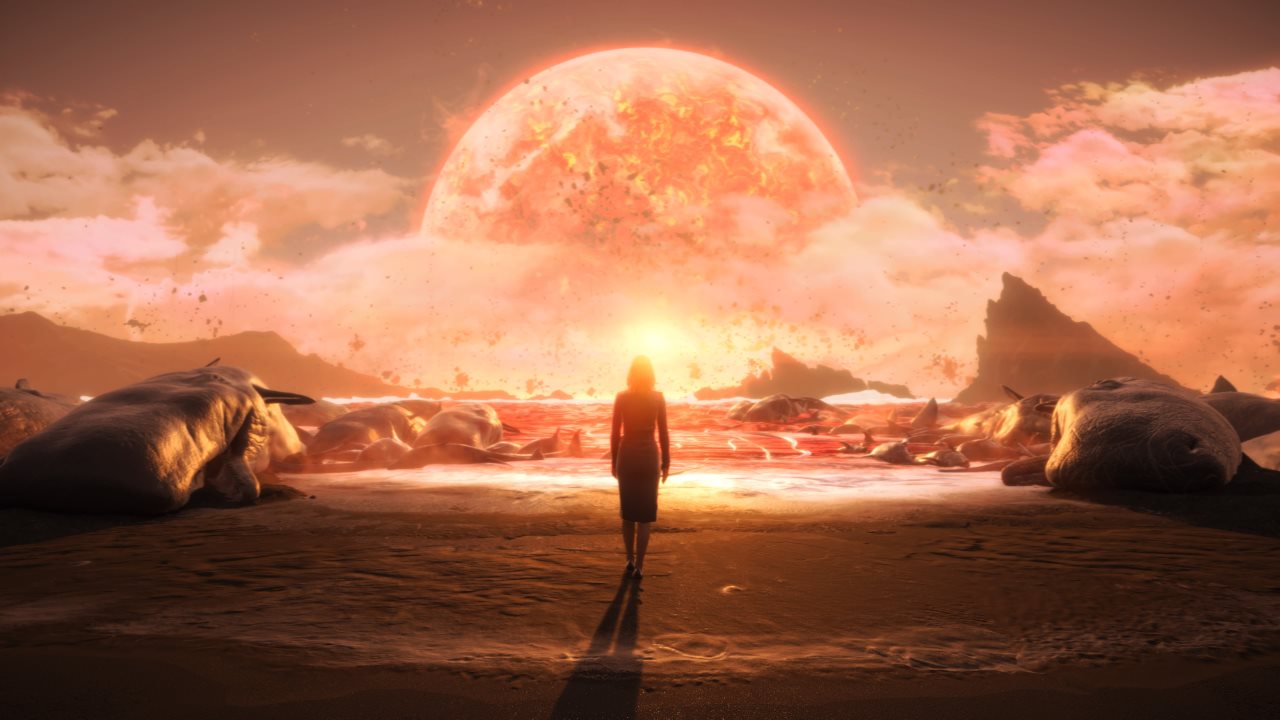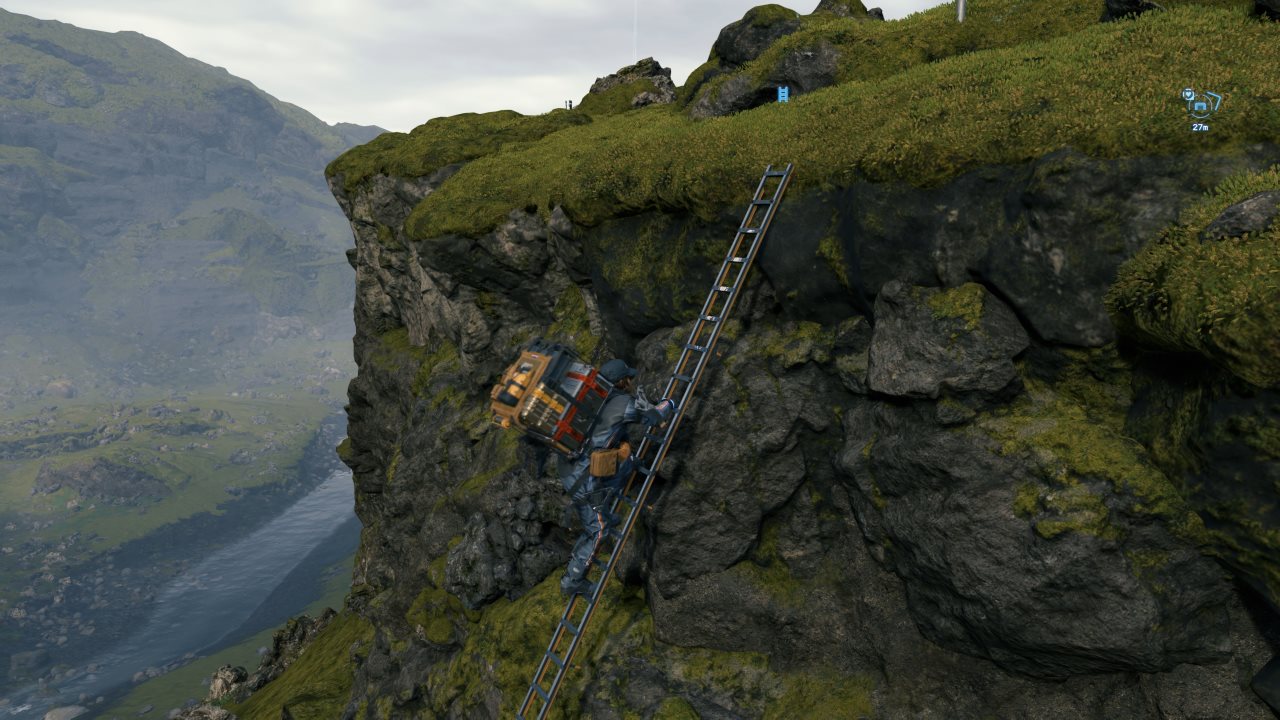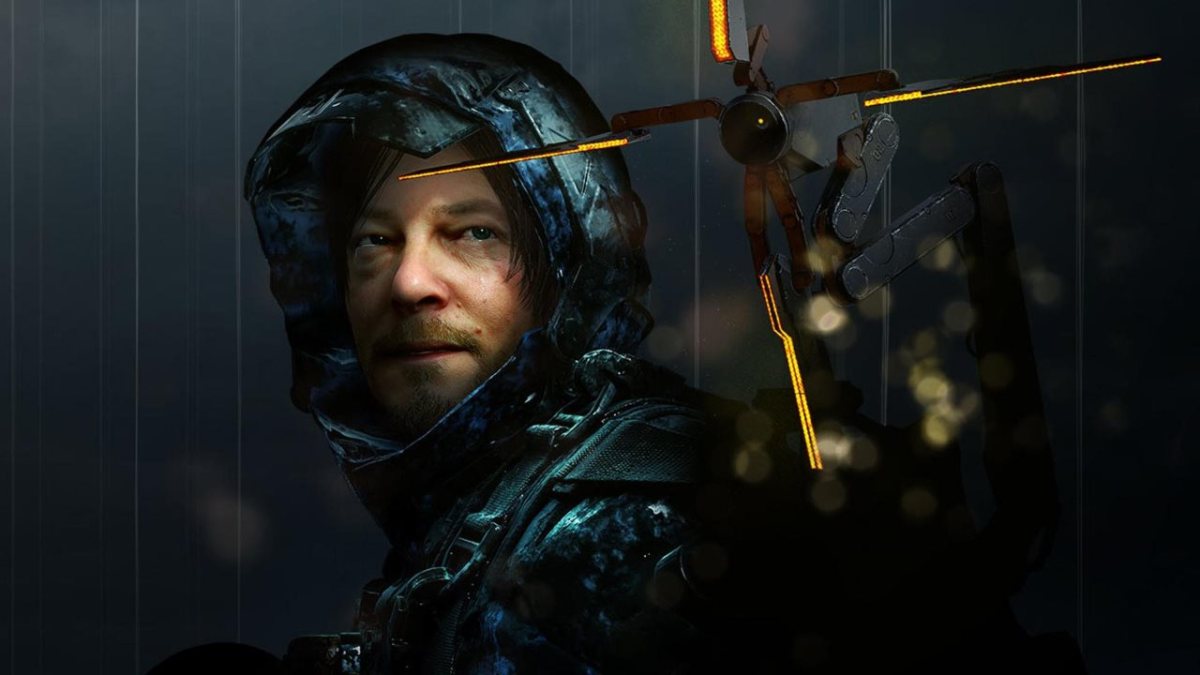Few games launch with as much anticipation and confusion surrounding them as Death Stranding. The title comes from one of gaming’s most celebrated creators, Hideo Kojima. But it also represents a big change for him, coming from his brand new studio and shifting away from the iconic Metal Gear Solid series. Would this mean a better game, or would it delve too deeply into the elements that started to turn some players away from his previous work. In the end, it’s a bit of both, but what we certainly have with Death Stranding is a bold, almost experimental release with all the polish and attention to detail of a AAA, Kojima directed game. Beneath that veneer though is a story that struggles to come together as well as it could or should. Feeling like an unfinished puzzle at times, though the pieces that do fit together are quite beautiful on their own.
Describing the plot of Death Stranding often diminishes it in some ways, as many players will find the further they get into the main story. If you’ve watched all the released trailers and footage, no doubt you have pieced together the basics in your own head. A massive, world changing event has occurred resulting in a sort of merging of the worlds of the living and the dead. Every death now carries with it a threat to anyone nearby, with humans essentially becoming a nuclear bomb hours after they pass. A side effect of this is Timefall, where rain falls from the sky, rapidly aging anything it touches. And with Timefall come BTs, spectral entities who linger on Earth, trying to kill anything they can touch, leading to even more chaos, fear, and confusion.

To combat this, human society has fractured, splitting apart into fortified cities or smaller settlements out in the wilds. Surrounding themselves with walls and borders, humans are no longer connected to each other as they were before, which is exactly what you’ll be trying to change. As Sam Porter you will deliver packages, but more importantly you’ll be rebuilding America by connecting people back up through the Chiral Network. This connection not only solidifies personal bonds, but also expands Sam and the player’s reach, growing your stable of safe havens and helpful contributors amidst the chaos and danger of the post-Death Stranding world. But does this Chiral Network hold the key to mankind’s salvation, or will it simply hasten its doom?
These are just the basics of Death Stranding’s long and sometimes meandering story. Stretching over a campaign that will easily take around 40 hours to complete even without side content, the plot spirals into multiple directions from there. This often delivers truly touching and emotionally charged story content, such as the deeper dives into Sam’s helpful side characters, especially Mama, Fragile, and the Mysterious Man. All are played by some of Hollywood’s biggest actors with the best character designs in practically any video game. Other times, however, it strays closer to the more extreme and slightly unintelligible elements of Kojima’s later Metal Gear games.
Death Stranding enmeshes its story with its gameplay more than most other games
That’s not to say the story doesn’t make sense, it does. It is just structured in ways that leave the player wondering what exactly is going on at most times. Character’s names and their relationships are muddied in an intentional fashion. And while this works for the first few chapters, eventually you start to wonder how much more impactful the plot would be if you had a firmer grasp on what was going on in the deeper aspects of the narrative. You are often fed this information eventually, but it arrives after moments that would have landed harder and with more emotional heft had you known the details earlier. Foreshadowing and cryptic plots work well, but Death Stranding takes it to an extreme that harms the overall goal, which is to make you feel its many messages at your core.
To its great credit, Death Stranding enmeshes its story with its gameplay more than most other games, which often helps to overcome this fault. The story is about the struggle to connect humans to each other, conquering their fears and fighting against the forces that seek to divide us. Similarly the gameplay will task players with many things that they’ll find difficult or frustrating. At its core, this is an adventure game, with Sam questing across the entire country, now dubbed the United Cities of America. On that journey you’re most common task will simply be to get whatever cargo you’re carrying from point A to point B. A fetch quest if you will, but somehow Death Stranding pulls off the miracle of making these seemingly simple and mundane tasks feel weighty and enjoyable.

Each mission typically boils down to picking up cargo at one of the “Knot Cities”, distribution centers, or shelters then trekking across vast stretches of land to deliver it. To accomplish this you have many tools at your disposal, such as ladders, ropes, vehicles, or buildable structures. Along the way you’ll almost always find BT infested areas, rogue humans seeking to steal your precious cargo, or some lost items/supplies you can drop off along the way. Those first two are where Death Stranding shifts to a more typical game experience; featuring tense moments of stealth or even full blown combat, though this is rarely the focus. What the gameplay does put a heavy emphasis on is inventory and weight management, along with maintaining Sam and his BB’s health and well being, with various systems in place to handle it all.
Combat, even in the cinematic and spectacular boss battles, typically boils down to standard run and gun action with rare encounters feeling like a true challenge. Stealth works a fair bit better, utilizing the BB, a baby that connects Sam to the “other side”, to point out danger for you to avoid. During these moments you’ll expend health and stamina, as well as cause stress for BB. Managing all of this is simple and easy, but takes a lot of time often unnecessarily. For example, resting at a Safe Haven, something you do quite often, forces players to watch or skip through multiple cutscenes that will become repetitive very quickly. Everything from inventory management to health systems are well designed given how much there is to keep in check, though the many screens and mechanics can be overwhelming through the first few chapters.
On paper, Death Stranding’s gameplay sounds extremely dull and frustrating, and indeed it can start to feel that way at times. However, this is actually the goal more often than not, with the game using its gameplay mechanics to drive home its message of connection and how important it is to work together for the greater good. The element that hammers this home the most is the online mechanic, which isn’t full multiplayer, but still impacts the game in huge ways. Throughout your time journeying around the world of Death Stranding you can build structures to make these trips easier. Is there a river in your way? Build a bridge. Keep running out of battery halfway to one location? Build a generator. And in building those things you not only help yourself but your fellow players as well. This is where Death Stranding truly hits its stride.

As you connect more areas of the world to the Chiral Network, behind the scenes you’re also connecting it to our own internet. Each time a new area goes live it will be flooded with objects, messages, supplies, and lost packages from other players. What this means in terms of the gameplay is that everything just got a lot easier. Areas that used to be nearly impassable become simple thanks to another player’s bridge, ladder, or shelter. Signs start to show up that hint at potential dangers or areas full of resources. Through connecting the fictional characters you’ve also connected yourself to your fellow real-life human beings.
This may seem simple, and indeed it’s an option some players may just turn off without even thinking about it. And yet, it is Death Stranding’s biggest achievement. The game is telling players through both its literal plot and the gameplay that connecting with others is important, that it makes your life and the lives of those around you richer and more enjoyable. And this works so well that many players will find themselves simply working toward the goal of earning more “Likes” which players can reward to each other for providing some piece of equipment or assistance. Did you find that mountain particularly tough to traverse? Build a zip-line network across it and not only will you benefit, but every other player you connect with through Death Stranding’s online element will as well.
The game looks and feels great even as it frustrates you
But while the ethereal elements work to push the underlying narrative, the story itself doesn’t fully come together in the end. As I described it, it felt like a puzzle was being put together in front of me. Sometimes large chunks would fit together perfectly and hint at the greater whole, but that whole never developed in a satisfying way, even after the game dumps its major plot details on you through longer cutscenes and exposition. It relies so much on technobabble that doesn’t touch onto the larger themes that it results in more frustration at how a similar story could have been conveyed than it does genuine surprise and emotion. There are great moments within, but the whole is less than the sum of its parts, unfortunately.
Given how much the gameplay presents players with typically frustrating mechanics in service of this plot, you would think its partial failure would create an overall negative feeling about the game as a whole. However, thanks to the exceptional work on the underlying systems and presentation elements, the game looks and feels great even as it frustrates you. The simple act of climbing a mountain may take a lot of time as you struggle to maintain your balance, fend off BTs, and work to secure supplies, but once you clear it it leads to a true joy like few other games can deliver. And everything simply looks and sounds glorious with some of the best graphics out there, and a soundtrack that many will download and keep on a perpetual loop.

Even without the story or any set mission, the world itself is worthy of exploration. Every new area looks simply amazing, and features hidden secrets that are worth discovering. The old adage of “do you see that mountain? You can climb that mountain” is 100% true for Death Stranding, and the game benefits greatly from it. It has that wonderful quality of simply getting lost in the world, wasting time exploring some new area or stumbling across a side quest that you otherwise would have missed. Players could dedicate dozens of hours to this without being upset or feeling like they missed out on much, though that’s only if the core mechanics gel with your particular taste.
And of course, being a Kojima game, there are so many moments of pure fun and meta humor that the game never truly feels like it takes itself too seriously. Sure, there’s an important message at its core, but you can also just go around peeing on everything and ignoring the plot entirely, if you want. That is likely what will happen to a majority of players, with huge sections of the game devoted to building up and improving sections of the map. If you stop here, the story will be incomplete, but the game will continue to surprise and delight you with its amazingly complex mechanics and intense attention to detail. And with the online elements, players will always have new things to work on or interact with.
The Verdict
Death Stranding is equal parts amazing and exasperating. It features stellar acting, graphics, and sound. It’s a revelation in many of its gameplay mechanics, while also relying on typically frustrating things like fetch quests and inventory management. And it’s a game that is laser focused on conveying a message both in its story and gameplay. But the story lacks the punch it could have had, if it had been structured in a way that leaned into those moments, rather than obfuscating them. What it does without exception though is meld the gameplay with the message, creating something truly unique in the end. If you can work through its frustrating parts and look past its plot failings, there’s something wonderful here, but many will come away disappointed if their expectations aren’t in check.











Published: Nov 1, 2019 01:59 am